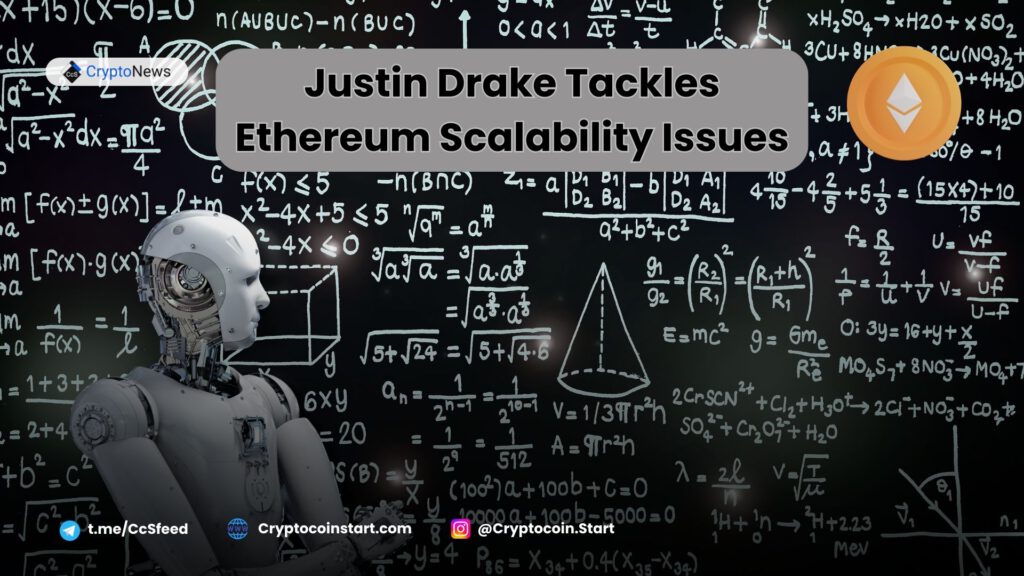
Justin Drake’s Vision for ETH 3.0
Justin Drake, a prominent Ethereum researcher, has outlined a roadmap that could lead to ETH 3.0, addressing the scalability issues that Ethereum faces today. His proposal has generated significant interest in the Ethereum community, as it envisions substantial upgrades to the blockchain’s core architecture.
One of the most exciting aspects of Drake’s proposal is the integration of a new consensus model and the introduction of zkEVM, a technology that could revolutionize Ethereum’s scalability. Ethereum has long struggled with gas fees and block limits, but with these new advancements, the network could handle larger blocks and transactions without compromising performance.
Could zkEVM Transform Ethereum’s Scalability?
Doug Colkitt, founder of Ambient Finance, weighed in on the potential impact of zkEVM on Ethereum. He suggests that the implementation of zkEVM could dramatically improve Ethereum’s scalability by eliminating the need for Layer-2 solutions. Layer-2 solutions, like Optimism and Arbitrum, have helped scale Ethereum by processing transactions off-chain and then settling them on the main network. However, if zkEVM can handle larger blocks and snark verification natively, Ethereum could bypass the need for these off-chain solutions entirely.
The key idea behind zkEVM is that it enables the use of zero-knowledge proofs, allowing for more efficient and secure validation of transactions. This would not only improve transaction throughput but also reduce gas costs, making Ethereum a more scalable and affordable blockchain for decentralized applications (dApps) and users.
The Latest Solutions for Ethereum’s Scalability Challenges
The Ethereum community continues to explore various solutions to its scalability challenges. Alongside zkEVM, there are ongoing discussions around other strategies that could address Ethereum’s limitations. Joe Lubin, the CEO of ConsenSys, shared insights on exploring both zero-knowledge and optimistic rollups to tackle Ethereum’s scaling issues. While execution sharding—a previously proposed solution—has been shelved for now, new alternatives are being considered to enhance Ethereum’s ability to process transactions at a much higher rate.
If these new solutions are successful, Ethereum could scale to handle millions of transactions per second, positioning it as a leader in the blockchain ecosystem. However, as with any major upgrade to a decentralized network, the realization of these ambitious goals will likely take several years of development, testing, and implementation.
Community Expectations for ETH 3.0
While the Ethereum community eagerly anticipates ETH 3.0, there has been some uncertainty surrounding the latest proposals. Major updates to the Ethereum network are typically introduced through Ethereum Improvement Proposals (EIPs), which provide a clear roadmap for upcoming changes. However, Justin Drake’s recent proposals have left many in the community eagerly awaiting more concrete details about ETH 3.0.
The buzz surrounding ETH 3.0 has been palpable, but the community is still awaiting clarity on the specifics of the proposed solutions. Despite the lack of formal EIPs, many members are optimistic that the introduction of zkEVM and other scaling solutions will significantly enhance Ethereum’s capabilities and set the stage for the blockchain’s long-term success.
Key Takeaways from Justin Drake’s Proposal
- Justin Drake’s solutions could significantly improve Ethereum’s scalability, addressing long-standing issues with gas fees and transaction throughput.
- The integration of zkEVM into Ethereum may eliminate the need for Layer-2 solutions, allowing for more efficient and direct processing of transactions.
- Joe Lubin highlights ongoing research into various strategies, including zero-knowledge and optimistic rollups, to further enhance Ethereum’s scalability.
- Ethereum’s community is eagerly awaiting concrete updates on ETH 3.0 and the potential implementation of these new technologies.
Looking Ahead: The Future of Ethereum’s Scalability
As Ethereum pushes forward in its quest for greater scalability and efficiency, the community is closely monitoring the progress of new technologies like zkEVM. While the vision for ETH 3.0 is still in its early stages, the excitement surrounding potential breakthroughs like zero-knowledge proofs and new consensus models suggests that Ethereum could soon overcome many of the limitations that have held it back in the past.
If successful, these advancements could position Ethereum as the leading blockchain for decentralized finance (DeFi), non-fungible tokens (NFTs), and other blockchain-based applications, supporting millions of transactions per second and offering lower costs for users and developers alike.
Conclusion
Ethereum’s scalability challenges are well-known, but the proposed solutions, including Justin Drake’s ideas for ETH 3.0 and the integration of zkEVM, could bring about transformative changes. As the Ethereum community continues to explore innovative ways to improve the network’s capabilities, it is clear that the future of Ethereum looks promising. With ongoing research and community support, Ethereum may soon achieve the scalability needed to become the backbone of the decentralized internet.

